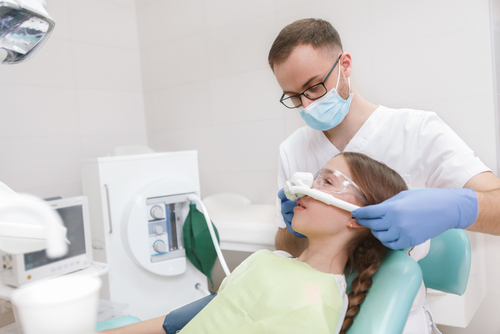Sedation dentistry commonly referred to as sleep dentistry or intravenous (IV) sedation, is a type of dental care that uses medicine to calm patients down while treatments are being done. Patients who have anxiety or worry when going to the dentist as well as those who require extensive or intricate dental work frequently utilize it. Sedation dentistry has grown in popularity recently as a secure and reliable technique to enhance the dental experience. It can provide a number of advantages for both patients and dentists. 
Sedation dentistry offers many advantages, one of which is that it can assist patients in overcoming their anxiety and fear of dental operations. When going to the dentist, many people experience anxiety or nervousness, which makes it challenging for them to unwind while receiving treatment. Patients who use sedation dentistry report feeling peaceful and at ease, which can make their overall dental experience more relaxing and less stressful.
Sedation dentistry also gives dentists the ability to complete more complicated operations more quickly. Dentists can perform more effectively when patients feel at ease, which may lead to fewer appointments and a quicker healing time overall. This can cut down on the number of visits and the amount of time spent in the dental chair, which is especially beneficial for individuals who require major dental work.
Patients with sensitive teeth or limited pain tolerance may potentially benefit from sedation dentistry. Sedation can assist in easing discomfort and anxiety during some dental treatments, such as extractions or root canals, which can be painful. Patients with a strong gag reflex may also benefit from sedation because it can help them unwind and stop gagging while receiving therapy.
The best sedation technique will depend on the patient’s needs and the kind of treatment being done. There are various different types of sedation that can be utilized in dentistry. Oral, inhaled, and IV sedation are the most prevalent forms of sedation used in dentistry.
Prior to the procedure, a tablet or liquid medicine is used for oral sedation. Patients can stay alert and responsive while under this sort of light sedation, though they may feel sleepy and remember nothing of the treatment. Nitrous oxide, sometimes referred to as laughing gas, is used during inhalation sedation to relax patients. It is inhaled using a mask. IV sedation, commonly referred to as conscious sedation, involves injecting drugs directly into a vein and is frequently employed for more involved treatments. With IV sedation, patients can stay awake but may not recall the surgery and may have trouble responding to directions.
A qualified and licensed dental expert often administers sedation dentistry, which is typically safe and efficient. However, there are some dangers associated with any medical procedure, and patients should talk to their dentist about these concerns before beginning treatment.
Sedation dentistry can generally assist both patients and dentists in a variety of ways. In addition to enabling dentists to complete more complicated operations faster, it can also assist patients in overcoming their fear and anxiety of dental procedures. Sedation dentistry is a secure and efficient technique to enhance the dental experience for patients, making it more relaxing and less stressful.